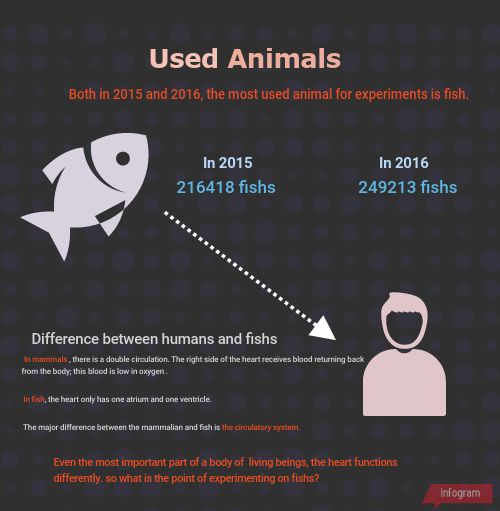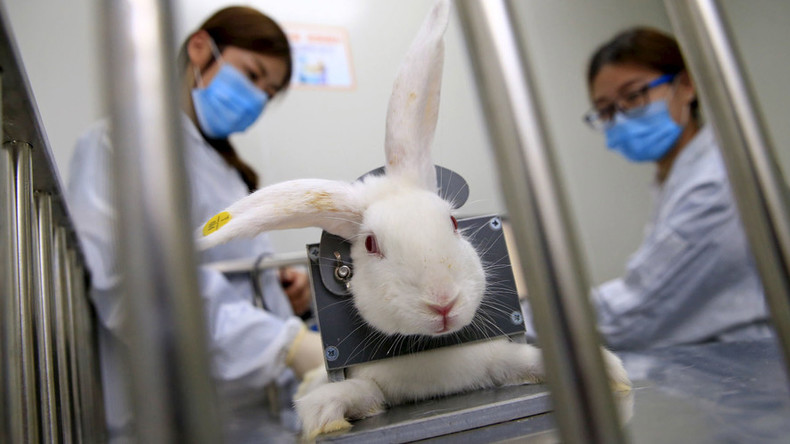Is Animal Testing really scientific and practical? Not to mention ethics -Hazal Engin
More than 450.000 animals suffer and die in Turkey every year in cruel chemical, drug, food, and cosmetics tests as well as in medical training exercises and experiments at universities. It’s surprising when we compare the total number of experiments each year, we observe a drastic increase in usages with regards to animal experiments.
HADMEK (Ethics Committee of Animal Testing) releases the documents which concern the data about the usage of animals in experiments. However; most of the data they provide is seen insufficient to answer the ethical questions on what happens to the animals used in such experiments after the procedures.
There are legislations that protect the animals and guarantee their adoption after the procedures. Yet there is no significant proof to justify such laws are really applied. Therefore, platforms as DENEYE HAYIR, which favors animal’s rights against the experiments, states that such animals are either killed or if ‘healthy enough’ re-used for testings after the experiment procedures. The procedures include biological researches, curiosity, education researches for health purposes. But there is no clear proof again to justify whether such experiments really help human health. There is only less than %2 of resemblance (%1.6) between human diseases and animal diseases and %98 of human diseases are never encountered in animals.
Animal Experiments for What ?
According to the data provided by HADMEK , in 2016, 449450 animals were used in testings. However they release the purposes of such testings only for 221328 of animals in that year. So this bares the question of what happened to 228122 animals which are experimented on and more importantly for what they were used?
Such amount of unexplained testings actually makes us question whether those testings are really necessary to understand diseases or issues related with living beings. What we definitely know is that only in Turkey, there are 83 institutes which are authorized to operate such animal experiments. By clicking on the map, you can see the location of such institutes.
To be more specific in my argument, I will compare the survey results which were conducted in two of the institutions located on the map above. These are Fırat University in which the survey was conducted in 2017, and Erciyes University in which the survey was conducted in 2006. The surveys were conducted on those institutes with the academic participants of the institutes in faculty of veterinary. Moreover, the outcome shows that even the participants of the animal experiments who are also the participants of the surveys do not thoroughly sure that the animal testing is more scientific or more practical or ethical way of exploring the biology and its boundaries.
Contradictions within the animal experiment procedures
According to the results of the survey, in the light of categories as practicality and scientificness, %73,3 of the participants in Fırat University were actually opposed to implement on such testing procedures on animals. Whereas in Erciyes University this percentage is calculated as %50. It’s with no doubt that there is no full agreement on implementing such unethical procedures. In terms of ethics, %25,8 of the participants agreed that animal testing is actually ethical in Fırat University. While in Erciyes University, this number is only %13,3.
The survey results clearly emphasize that animal testing is not seen ethical even by the ones who are obliged to implement the procedures. It is also clear that HADMEK and the institutions which are authorized by HADMEK such as Fırat University and Erciyes University, failed to justify not only the purpose of the experiments but also the features and advantages of animal experiments.
Another question to ask;

Contact Info for the surveys:
Deneye Hayır Platform
Yağmur Özgür Güven
info@deneyehayir.org
Data provided by HADMEK;
https://docs.google.com/spreadsheets/d/1OnbUiV9WmQT1ce7FkJDs9afTLTBcl0xIT1a8juU-5dQ/edit#gid=790391716
Methodology:
-Scraping data from HADMEK’s charts into excel sheet
-Creating graphics in spreadsheet
-Datawrapper
-Google Fusion
-Infogram
